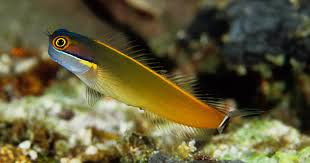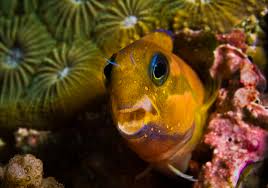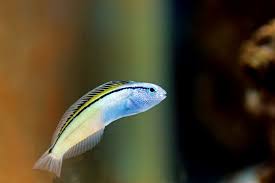
In Chinese art, the dragon and phoenix are two of the most iconic and revered mythical creatures, often depicted together as symbols of balance, harmony, and unity. Both creatures have a deep cultural and philosophical significance, representing duality and the interconnectedness of natural and cosmic forces. The union of the dragon and phoenix embodies the cosmic order and the harmonious integration of the forces of Heaven and Earth, making them central to Chinese art, mythology, and symbolism. In this article, we will explore the meanings and symbolism of the dragon and phoenix in Chinese art, their historical roles, and their significance as representations of the union of Heaven and Earth.
The Dragon in Chinese Art: Power, Authority, and Cosmic Energy
The dragon is one of the most significant symbols in Chinese culture, representing strength, power, and good fortune. In Chinese mythology, the dragon is often seen as a benevolent and auspicious creature, associated with water, rain, and the forces of nature. Dragons are believed to have the ability to control the elements, particularly water, which is crucial for agricultural societies that depend on rainfall for crops.
In art, the dragon is often depicted as a long, serpentine creature with the head of a camel, the antlers of a stag, the eyes of a rabbit, the ears of an ox, the neck of a snake, and the claws of an eagle. This composite figure symbolizes the unity of different natural forces, emphasizing the idea that all aspects of the natural world are interconnected and work together in harmony. Dragons are often shown surrounded by clouds, waves, and other elements that represent the sky and the Earth, reinforcing their role as celestial and earthly creatures.
The dragon also holds significant political and imperial symbolism. In ancient China, the dragon was the exclusive symbol of the emperor, and the imperial court used dragon imagery extensively in art, clothing, and architecture to signify the emperor’s divine authority. The dragon’s association with the emperor was linked to the belief in the Mandate of Heaven, which granted the emperor the right to rule as the “Son of Heaven.” This connection between the emperor and the dragon symbolized the emperor’s ability to maintain balance and harmony between Heaven and Earth.
The Phoenix in Chinese Art: Rebirth, Harmony, and Feminine Energy
The phoenix, or Fenghuang (凤凰), is another powerful and important symbol in Chinese culture. Unlike the dragon, which is traditionally associated with male energy, the phoenix represents the balance of feminine and masculine energies, often seen as a symbol of harmony, grace, and beauty. The phoenix is also associated with the Empress, with the dragon being linked to the Emperor, symbolizing the harmonious union between male and female principles in the imperial family.
In Chinese mythology, the phoenix is a symbol of immortality and rebirth, often described as a bird that rises from the ashes of its own death. This process of renewal signifies resilience, the cyclical nature of life, and the power of transformation. The phoenix is often depicted with the body of a peacock, the head of a rooster, the wings of a swallow, and the legs of a crane, embodying the idea of all good qualities coming together in a single, elegant being.
The phoenix is frequently shown with colorful feathers, which are often described as having five primary colors: red, green, blue, black, and white. These colors correspond to the five elements in Chinese cosmology (fire, wood, water, metal, and earth), symbolizing the balance of the natural world and the harmonious coexistence of the forces that shape life. The phoenix is often depicted in flight, soaring through the heavens, symbolizing the connection between the celestial and terrestrial realms.
The Union of Dragon and Phoenix: The Cosmic Balance of Heaven and Earth
The combination of the dragon and phoenix in Chinese art represents the harmonious union of opposing forces, the balance between Yin and Yang, and the connection between Heaven and Earth. The dragon embodies the male, active, and assertive energy of the cosmos, while the phoenix represents the female, passive, and nurturing forces. Together, they form a perfect pair, symbolizing the ideal relationship between the emperor and empress, the masculine and feminine, and the celestial and earthly forces that govern the world.
This duality is deeply rooted in Chinese philosophical thought, particularly the concept of Yin and Yang. Yin and Yang are two complementary and interconnected forces that are essential to the harmony and balance of the universe. Yin represents the passive, feminine, dark, and receptive aspects of existence, while Yang represents the active, masculine, light, and assertive aspects. The union of the dragon (Yang) and the phoenix (Yin) symbolizes the necessary balance of these forces in creating a harmonious world.
In art, the dragon and phoenix are often depicted together in a variety of forms. They may appear on imperial robes, ceramics, murals, and other decorative arts, where they are shown in an intertwined, complementary dance. In these depictions, the dragon and phoenix are often depicted as chasing each other in the clouds, with the dragon symbolizing the heavens and the phoenix representing the Earth. This dynamic interaction between the two creatures emphasizes the interconnectedness of Heaven and Earth and the need for balance and harmony between the celestial and terrestrial realms.
The Dragon and Phoenix in Imperial Art: A Symbol of Dynastic Harmony
Throughout Chinese history, the dragon and phoenix have been used extensively in imperial art to symbolize the harmonious relationship between the emperor and empress. The dragon was the symbol of the emperor, and the phoenix was the symbol of the empress, and together they were used to represent the unity and strength of the imperial family. The pairing of the dragon and phoenix on imperial regalia, such as robes and thrones, reinforced the idea that the emperor and empress were the central figures in maintaining cosmic balance and harmony.
One of the most famous examples of dragon and phoenix imagery in imperial art is the dragon robe worn by the emperor. These robes were richly embroidered with dragon motifs, often in gold thread, and were worn during important state ceremonies. The emperor’s robes were often paired with the empress’s phoenix robe, which featured embroidered phoenix designs. These robes were not only a display of imperial power but also a symbol of the perfect union between the emperor and empress, who were seen as the earthly embodiments of the dragon and phoenix.
In addition to clothing, the dragon and phoenix also appeared in architectural elements, such as the imperial throne and palaces. The throne was often adorned with dragon motifs to signify the emperor’s power, while the empress’s seat might include phoenix imagery to represent her role as the consort and equal partner in maintaining harmony and balance in the empire.
The Dragon and Phoenix in Chinese Festivals and Traditions
Beyond their role in imperial art, the dragon and phoenix are also prominent symbols in Chinese festivals and cultural traditions. The Dragon Boat Festival is one of the most well-known celebrations in which the dragon plays a central role. During this festival, people race dragon-shaped boats to honor the ancient poet Qu Yuan and to pray for good fortune and protection from evil spirits. The dragon boat symbolizes strength, resilience, and the power of the natural world, while also serving as a reminder of the importance of balance between Heaven and Earth.
Similarly, the wedding ceremony in traditional Chinese culture often features dragon and phoenix imagery to symbolize the union of the bride and groom. The dragon represents the groom, while the phoenix represents the bride. Together, they symbolize the ideal marriage, based on the harmonious integration of masculine and feminine energies. Dragon and phoenix motifs are used in wedding decorations, jewelry, and clothing to bless the couple with happiness, prosperity, and the blessings of Heaven.
In addition, the Phoenix Dance and Dragon Dance are traditional performances that are an integral part of many Chinese festivals, particularly during the Chinese New Year celebrations. These dances are meant to bring good luck and fortune, and they symbolize the balance and interconnectedness of Heaven and Earth, as well as the prosperity and harmony that come with it.
Conclusion: The Enduring Symbolism of the Dragon and Phoenix
The dragon and phoenix are among the most enduring and powerful symbols in Chinese culture, representing the perfect balance between Heaven and Earth, the unity of opposites, and the harmonious relationship between masculine and feminine forces. Through their depiction in art, architecture, and cultural traditions, these two mythical creatures continue to play a central role in Chinese life, from imperial ceremonies to festive celebrations.
In Chinese art, the dragon and phoenix are not merely decorative motifs but are profound representations of the cosmic order, the divine right to rule, and the fundamental principles of balance and harmony that govern the universe. Together, they embody the eternal relationship between the celestial and earthly realms, and their union serves as a reminder of the interconnectedness of all things in the natural world. The dragon and phoenix remain timeless symbols of strength, resilience, beauty, and prosperity in Chinese culture, and their influence continues to inspire and shape the country’s artistic and cultural heritage.










